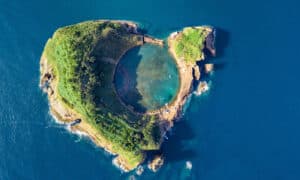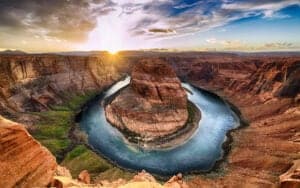10 of the Most Lucid Lakes in the United States
@media (min-width: 481px) {
.mobile-top-content {
display: none;
}
}
#mobileTopContentCTACarouselControls { overflow: hidden; text-overflow: ellipsis; white-space: nowrap; }
.mobile-top-content .more { color: #fff; }
.mobile-top-content a { color: #fff; text-decoration: underline; }
.mobile-top-content a:hover { color: #fff; text-decoration: underline; }
@media (max-width: 480px) {
.mobile-top-content {
background-color: #06a10b;
color: #fff;
text-align: center;
/*height: 60px;
padding-top:5px;*/
font-size:80%;
/* display: block; */
margin: 0px -30px;
}
}
One of the most stunning attractions on Earth is lakes. Lakes are bodies of water that serve various purposes— from fishing to recreational purposes like swimming and even sports. In a world where large bodies of water sit contaminated everyday, it would ease your mind if you found a lake so clear and peaceful with minimal risks to your health as well. Not all lakes are safe to swim in. However, if you would like to swim in or fish in a lake, here is a list containing 10 of the most lucid lakes in the United States.
10 Most Lucid Lakes in the United States
Lake Tahoe
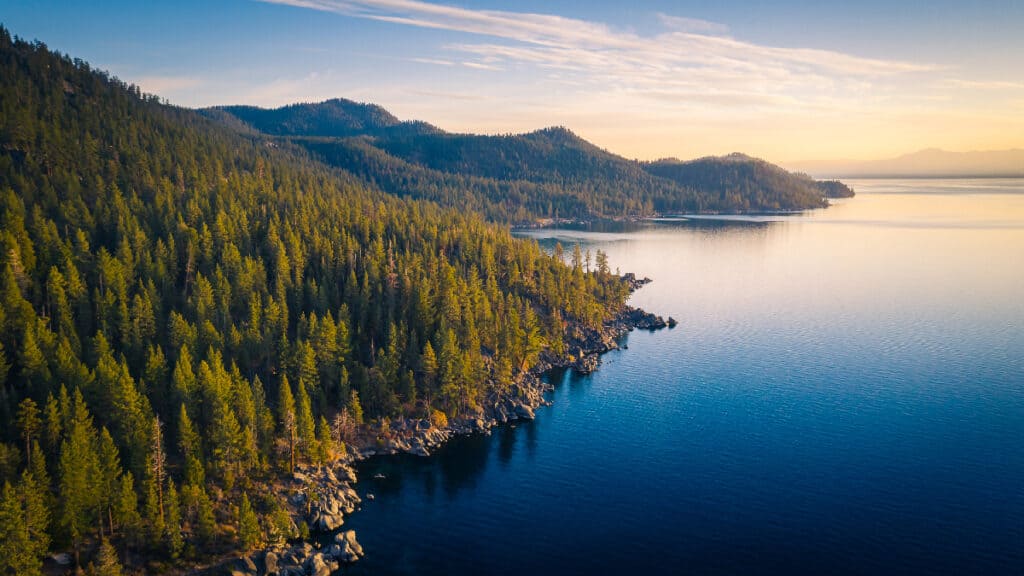
iStock.com/heyengel
One of the most interesting things about this lake is that it successfully marries two states within the United States of America, as it lies between California and Nevada. It is a large freshwater lake whose current form was shaped during the Ice Ages (talk about a cool fact). It is also the largest Alpine lake in the United States. Besides, it is the second-deepest lake after Crater Lake and is a major tourist attraction.
Lake Tahoe is home to winter sports, summer outdoor creation as well as beautiful and engaging scenery throughout the year. It is known for its richness in nutrients as well as its perfectly clear blue water.
Crater Lake
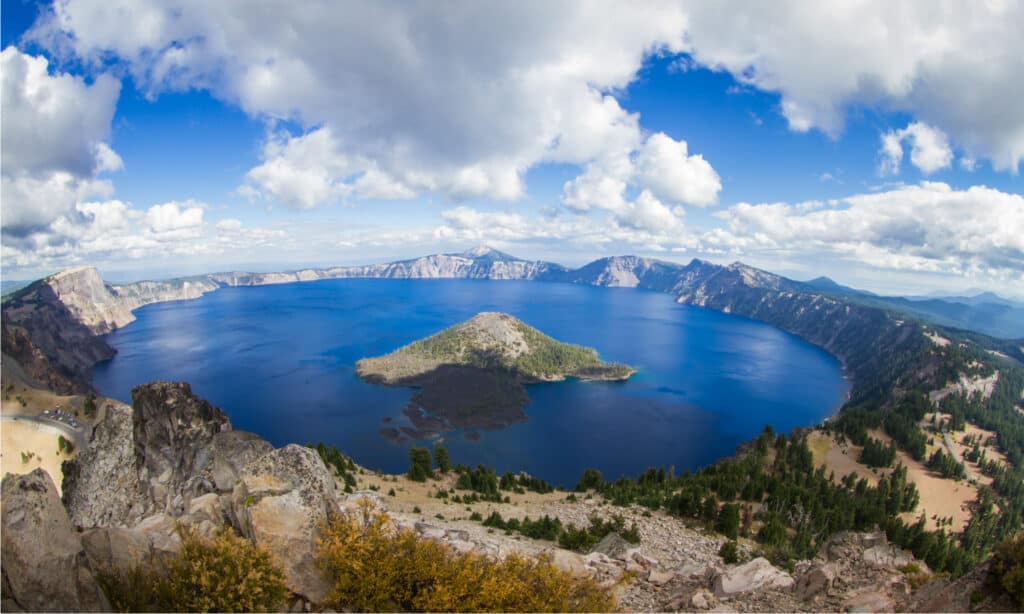
Wollertz/Shutterstock.com
Interestingly Crater Lake is a volcanic crater lake. Nestled in western Oregon in the United States of America, it is well known for its deep blue color and the clarity of its water. The lake itself fills out a caldera that was created by a volcanic eruption around 6,000 years ago.
It is also forked out to feature two small islands:
- The Wizard Island, which is a volcanic cinder cone that forms an island at the west end of Crater Lake National Park, Oregon.
- The Phantom Ship, which is another small island in Crater Lake. It has a natural rock formation pillar shaped like a ghost ship especially under foggy and poorly-lit lighting conditions.
Crater Lake is the deepest lake in the United States and one of the clearest too.
Hanging Lake

iStock.com/Donyanedomam
Located in the state of Colorado, this lake is situated in the Glenwood Canyon. This lake has clear-looking turquoise-colored water and can be reached via a trailhead located along the Glenwood Canyon Bike. There is also a pedestrian path that runs along the north side of the bottom of the canyon (if you are looking for a challenge in hiking, this might be a good place for you).
The formation of the lake is quite sensitive. Hence, some activities are restricted while visiting the lake and access fees vary per season, but if you think your hike to this fabulous lake would be boring, you are wrong. On the trail up to the lake, visitors will come across The Spouting Rock. It is a larger waterfall that flows from a set of stones in the Limestone Cliffs of Dead Horse Canyon. This lake receives up to 131,000 visitors per year.
Flathead Lake
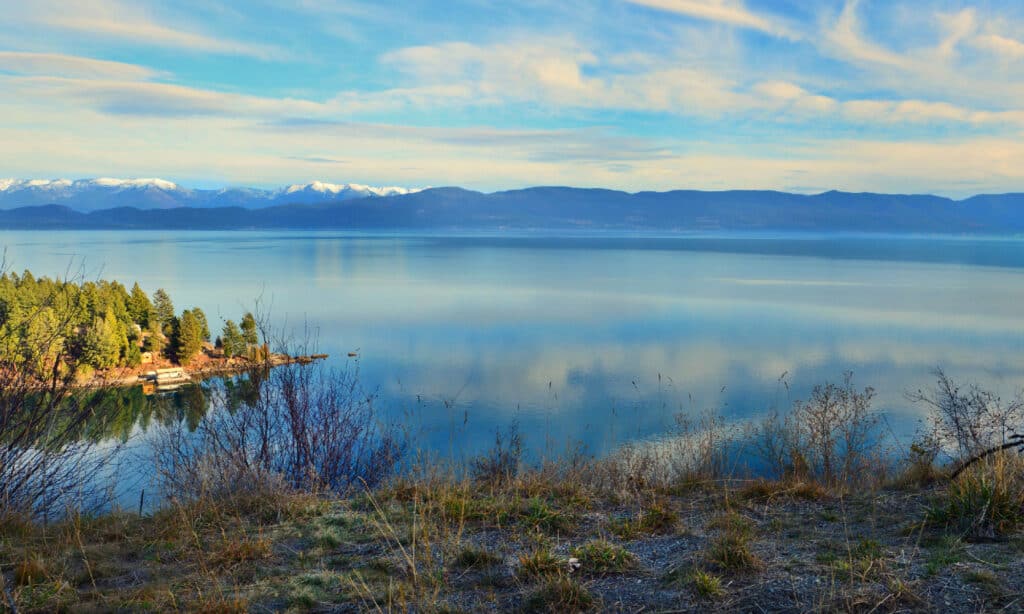
iStock.com/11jasons
Nature sure makes the best hangout spots and attractions. Flathead Lake is a testament to that statement. Located in Northwest Montana, it is a natural lake that is a remnant of Lake Missoula, an ancient, massive glacial dammed lake. The lake is known for its crystal clear water, and its size. It is larger in surface area than Lake Tahoe, although it lacks the depth of Lake Tahoe. Moreover, it is flanked by two scenic highways that stretch out alongside its curving shorelines.
Flathead lake hosts several native and non-native fishes. It is even home to the “Mack Days” Lake Trout fishing contest, which aims to reduce the non-native “Mackinaw trout” or lake trout (Salvelinus namaycush) populations, as well as educate people about the Flathead Lake Fisheries Management Plan.
Lake Chelan
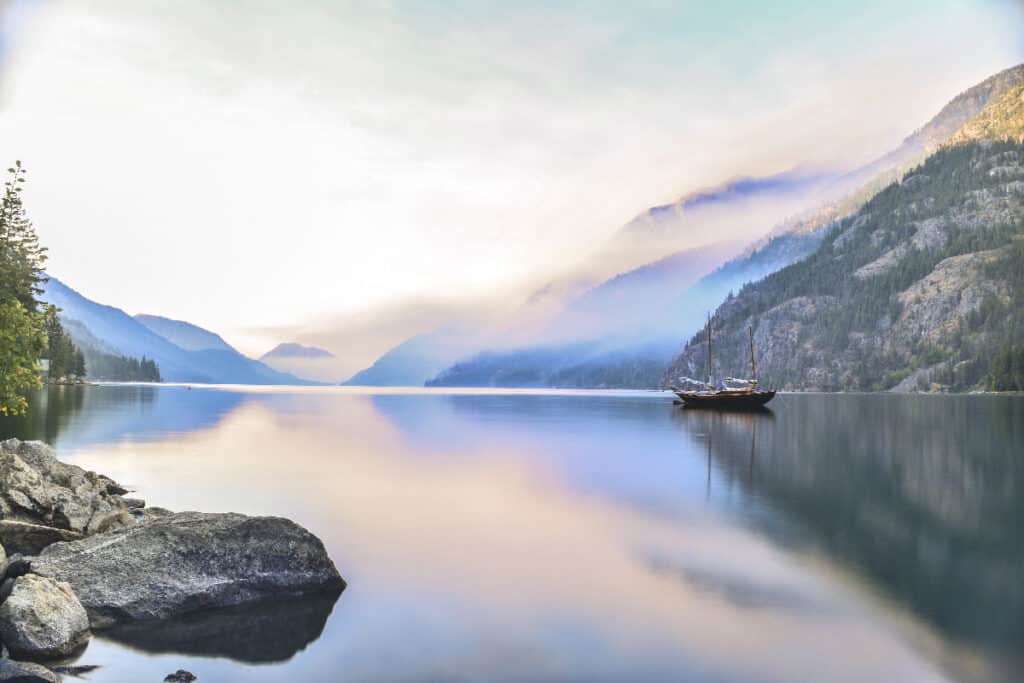
iStock.com/jmacarthur
If you are ever in Washington, you should visit Lake Chelan, situated in the state’s North Central. Lake Chelan is a long, narrow lake that is also the third deepest lake in the United States. About 75% of the water that flows into the lake comes from two tributaries- the Stehekin River and the Railroad Creek. Lake Chelan has two basins: the Wapato basin, which is lower, and the Lucerne Basin which is larger and deeper.
The water in Chelan Lake is deep blue and calming, and the lake itself is host to some recreational activities such as fishing and sport fishing.
Torch Lake

AnotherViewDroneService/Shutterstock.com
At 19 miles long, Torch Lake is Michigan’s longest inland lake. The lake has evident turquoise water and white sand bars. The lake’s name is derived from a translation of the Ojibwa name “waaswaaganing” meaning “Place of torches/flames”. This name is in reference to the ancient practice of native Americans who used torches at night to attract fish for harvesting at the lake.
Currently, the lake is known for its boisterous fishing activities as it accommodates a diverse variety of fishes. It is surrounded by different towns, and visitors will find hamlets and villages lined across its shores. There are also other nature-inclined activities allowed at the lake, and there is limited boat activity. So, if you are a lover of nature, Torch Lake is one of the best places you can visit.
Lake Coeur D’Alene
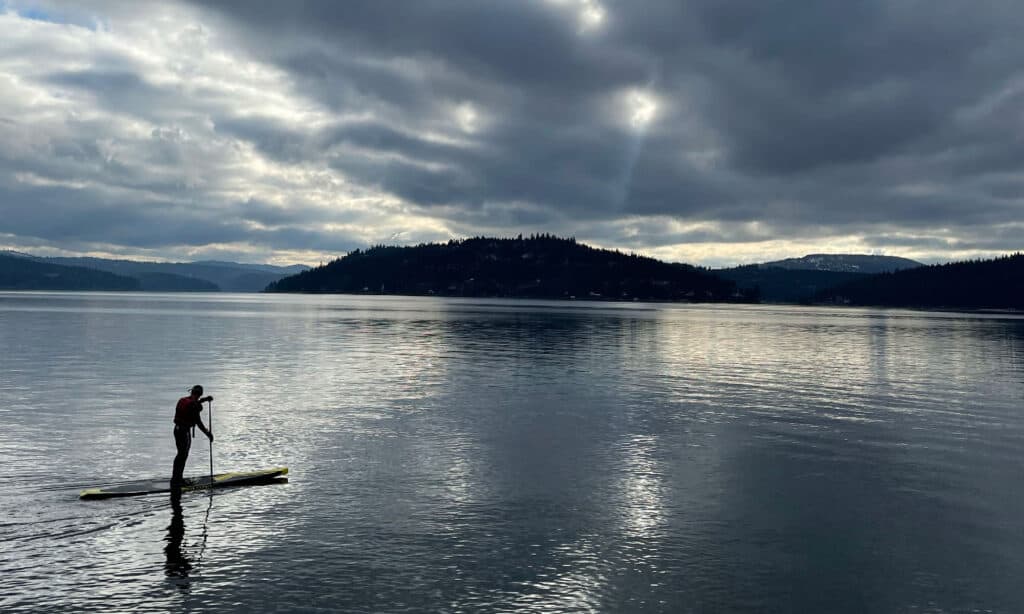
iStock.com/Chase Cabrera
Although this lake poses some health risks as it contains lead sediments at its bottom, it is still one of the clearest lakes in America. It serves as a great scenic view, and many people often visit the lake to view the bald eagles as they feed on the kokanee in the water. The lake hosted the unlimited hydroplane races for the Diamond Cup for a decade.
Interestingly, it is home to many fishes such as the bluegill, chinook salmon, yellow perch, largemouth, and smallmouth bass, among others. The popular North Idaho Centennial Trail also follows the lake’s north and northeastern shore. The Panhandle Health District advises visitors to wash any of their items that has come into contact with soil or dust from the lake. Such object could be contaminated with lead from the Coeur d’Alene River basin.
Lake George

majicphotos/Shutterstock.com
Also known as the “Queen of American Lakes,” this lake is a long, narrow, blue lucid lake located at the southeast base of the Adirondack Mountains in New York. It is surrounded by breathtaking mountains such as the Elephant Mountain, Shelving Rock, Black Mountain, Pilot Knob, and Sleeping Beauty Mountain.
Lake George successfully houses over 170 islands, most of which are state-owned, with camping permits available for most of the islands. Popular activities in the Lake George area include water sports, camping, amusement parks, hiking, paddling, and factory outlet shopping. One of the nation’s oldest gatherings of hot air balloons occurs every September in nearby Queensbury. Lake George generates about $2 billion annually for the local region.
Deer Lake
Deer Lake is in an unincorporated region in Itasca county, Minnesota. The lake has a turquoise color which seems to change depending on the angle of the sunlight and luminosity— this is, in fact, one of its major attractions. The lake supplies a nearby river, the Deer River, with water even though it has no water inlet of its own. The water levels of the lake are sustained by rainfall, springs, and run-off.
Deer Lake also seems more remote because it is surrounded by many pine trees adding to the serenity of the water. Residents and visitors claim it is a good fishing spot as well. Due to the clearness of the water, many of the fishers use a lighter monofilament than they would typically use or a fluorocarbon leader to not scare the fish away.
Lake Powell
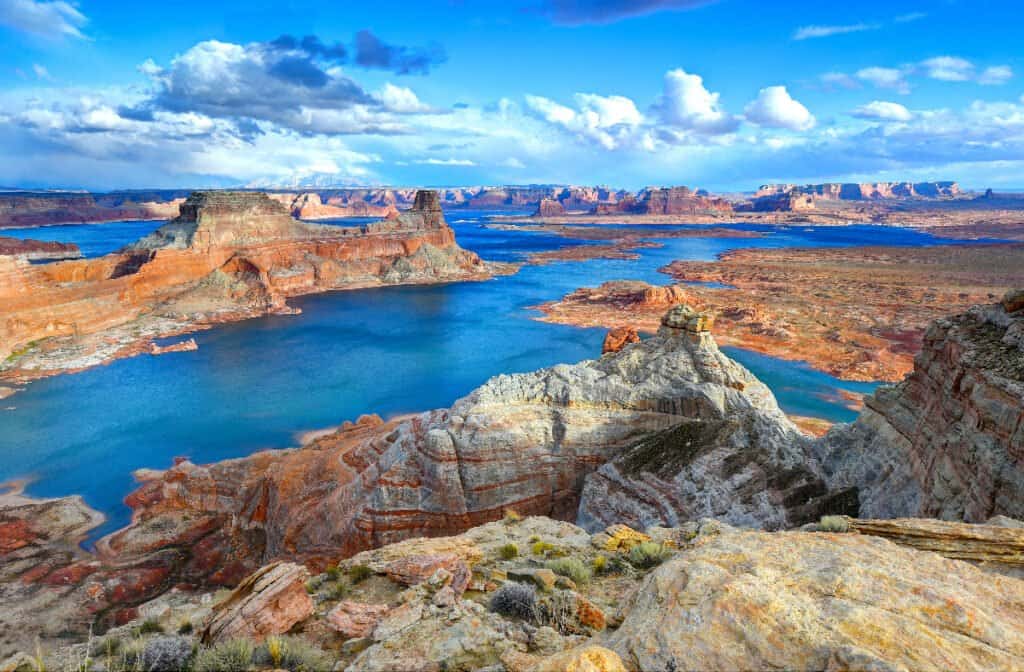
worldswildlifewonders/Shutterstock.com
Lake Powell is an artificial lake located on the Colorado River in Utah and Arizona. It is the second-largest artificial reservoir by maximum water capacity in the United States. Moreover, it is home to different fishes and sees about two million visitors per year.
One of the exciting things about the lake is that it has a lot of recreational activities, and prepared campgrounds can be found at the marinas. However, many visitors enjoy bringing along their own camping gear and finding a spot in the canyon to settle into and explore the lake. Owing to climate impacts, Lake Powell has been reported to be drying up. However, it still makes for a great tourism spot with its bright blue water.
More from A-Z Animals
.more-snake-card-image { max-height:140px !important; }
@media (min-width: 481px) {
.mobile-top-content {
display: none;
}
}
#mobileTopContentCTACarouselControls { overflow: hidden; text-overflow: ellipsis; white-space: nowrap; }
.mobile-top-content .more { color: #fff; }
.mobile-top-content a { color: #fff; text-decoration: underline; }
.mobile-top-content a:hover { color: #fff; text-decoration: underline; }
@media (max-width: 480px) {
.mobile-top-content {
background-color: #06a10b;
color: #fff;
text-align: center;
/*height: 60px;
padding-top:5px;*/
font-size:80%;
/* display: block; */
margin: 0px -30px;
}
}
One of the most stunning attractions on Earth is lakes. Lakes are bodies of water that serve various purposes— from fishing to recreational purposes like swimming and even sports. In a world where large bodies of water sit contaminated everyday, it would ease your mind if you found a lake so clear and peaceful with minimal risks to your health as well. Not all lakes are safe to swim in. However, if you would like to swim in or fish in a lake, here is a list containing 10 of the most lucid lakes in the United States.
10 Most Lucid Lakes in the United States
Lake Tahoe

iStock.com/heyengel
One of the most interesting things about this lake is that it successfully marries two states within the United States of America, as it lies between California and Nevada. It is a large freshwater lake whose current form was shaped during the Ice Ages (talk about a cool fact). It is also the largest Alpine lake in the United States. Besides, it is the second-deepest lake after Crater Lake and is a major tourist attraction.
Lake Tahoe is home to winter sports, summer outdoor creation as well as beautiful and engaging scenery throughout the year. It is known for its richness in nutrients as well as its perfectly clear blue water.
Crater Lake

Wollertz/Shutterstock.com
Interestingly Crater Lake is a volcanic crater lake. Nestled in western Oregon in the United States of America, it is well known for its deep blue color and the clarity of its water. The lake itself fills out a caldera that was created by a volcanic eruption around 6,000 years ago.
It is also forked out to feature two small islands:
- The Wizard Island, which is a volcanic cinder cone that forms an island at the west end of Crater Lake National Park, Oregon.
- The Phantom Ship, which is another small island in Crater Lake. It has a natural rock formation pillar shaped like a ghost ship especially under foggy and poorly-lit lighting conditions.
Crater Lake is the deepest lake in the United States and one of the clearest too.
Hanging Lake

iStock.com/Donyanedomam
Located in the state of Colorado, this lake is situated in the Glenwood Canyon. This lake has clear-looking turquoise-colored water and can be reached via a trailhead located along the Glenwood Canyon Bike. There is also a pedestrian path that runs along the north side of the bottom of the canyon (if you are looking for a challenge in hiking, this might be a good place for you).
The formation of the lake is quite sensitive. Hence, some activities are restricted while visiting the lake and access fees vary per season, but if you think your hike to this fabulous lake would be boring, you are wrong. On the trail up to the lake, visitors will come across The Spouting Rock. It is a larger waterfall that flows from a set of stones in the Limestone Cliffs of Dead Horse Canyon. This lake receives up to 131,000 visitors per year.
Flathead Lake

iStock.com/11jasons
Nature sure makes the best hangout spots and attractions. Flathead Lake is a testament to that statement. Located in Northwest Montana, it is a natural lake that is a remnant of Lake Missoula, an ancient, massive glacial dammed lake. The lake is known for its crystal clear water, and its size. It is larger in surface area than Lake Tahoe, although it lacks the depth of Lake Tahoe. Moreover, it is flanked by two scenic highways that stretch out alongside its curving shorelines.
Flathead lake hosts several native and non-native fishes. It is even home to the “Mack Days” Lake Trout fishing contest, which aims to reduce the non-native “Mackinaw trout” or lake trout (Salvelinus namaycush) populations, as well as educate people about the Flathead Lake Fisheries Management Plan.
Lake Chelan

iStock.com/jmacarthur
If you are ever in Washington, you should visit Lake Chelan, situated in the state’s North Central. Lake Chelan is a long, narrow lake that is also the third deepest lake in the United States. About 75% of the water that flows into the lake comes from two tributaries- the Stehekin River and the Railroad Creek. Lake Chelan has two basins: the Wapato basin, which is lower, and the Lucerne Basin which is larger and deeper.
The water in Chelan Lake is deep blue and calming, and the lake itself is host to some recreational activities such as fishing and sport fishing.
Torch Lake

AnotherViewDroneService/Shutterstock.com
At 19 miles long, Torch Lake is Michigan’s longest inland lake. The lake has evident turquoise water and white sand bars. The lake’s name is derived from a translation of the Ojibwa name “waaswaaganing” meaning “Place of torches/flames”. This name is in reference to the ancient practice of native Americans who used torches at night to attract fish for harvesting at the lake.
Currently, the lake is known for its boisterous fishing activities as it accommodates a diverse variety of fishes. It is surrounded by different towns, and visitors will find hamlets and villages lined across its shores. There are also other nature-inclined activities allowed at the lake, and there is limited boat activity. So, if you are a lover of nature, Torch Lake is one of the best places you can visit.
Lake Coeur D’Alene

iStock.com/Chase Cabrera
Although this lake poses some health risks as it contains lead sediments at its bottom, it is still one of the clearest lakes in America. It serves as a great scenic view, and many people often visit the lake to view the bald eagles as they feed on the kokanee in the water. The lake hosted the unlimited hydroplane races for the Diamond Cup for a decade.
Interestingly, it is home to many fishes such as the bluegill, chinook salmon, yellow perch, largemouth, and smallmouth bass, among others. The popular North Idaho Centennial Trail also follows the lake’s north and northeastern shore. The Panhandle Health District advises visitors to wash any of their items that has come into contact with soil or dust from the lake. Such object could be contaminated with lead from the Coeur d’Alene River basin.
Lake George

majicphotos/Shutterstock.com
Also known as the “Queen of American Lakes,” this lake is a long, narrow, blue lucid lake located at the southeast base of the Adirondack Mountains in New York. It is surrounded by breathtaking mountains such as the Elephant Mountain, Shelving Rock, Black Mountain, Pilot Knob, and Sleeping Beauty Mountain.
Lake George successfully houses over 170 islands, most of which are state-owned, with camping permits available for most of the islands. Popular activities in the Lake George area include water sports, camping, amusement parks, hiking, paddling, and factory outlet shopping. One of the nation’s oldest gatherings of hot air balloons occurs every September in nearby Queensbury. Lake George generates about $2 billion annually for the local region.
Deer Lake
Deer Lake is in an unincorporated region in Itasca county, Minnesota. The lake has a turquoise color which seems to change depending on the angle of the sunlight and luminosity— this is, in fact, one of its major attractions. The lake supplies a nearby river, the Deer River, with water even though it has no water inlet of its own. The water levels of the lake are sustained by rainfall, springs, and run-off.
Deer Lake also seems more remote because it is surrounded by many pine trees adding to the serenity of the water. Residents and visitors claim it is a good fishing spot as well. Due to the clearness of the water, many of the fishers use a lighter monofilament than they would typically use or a fluorocarbon leader to not scare the fish away.
Lake Powell

worldswildlifewonders/Shutterstock.com
Lake Powell is an artificial lake located on the Colorado River in Utah and Arizona. It is the second-largest artificial reservoir by maximum water capacity in the United States. Moreover, it is home to different fishes and sees about two million visitors per year.
One of the exciting things about the lake is that it has a lot of recreational activities, and prepared campgrounds can be found at the marinas. However, many visitors enjoy bringing along their own camping gear and finding a spot in the canyon to settle into and explore the lake. Owing to climate impacts, Lake Powell has been reported to be drying up. However, it still makes for a great tourism spot with its bright blue water.


